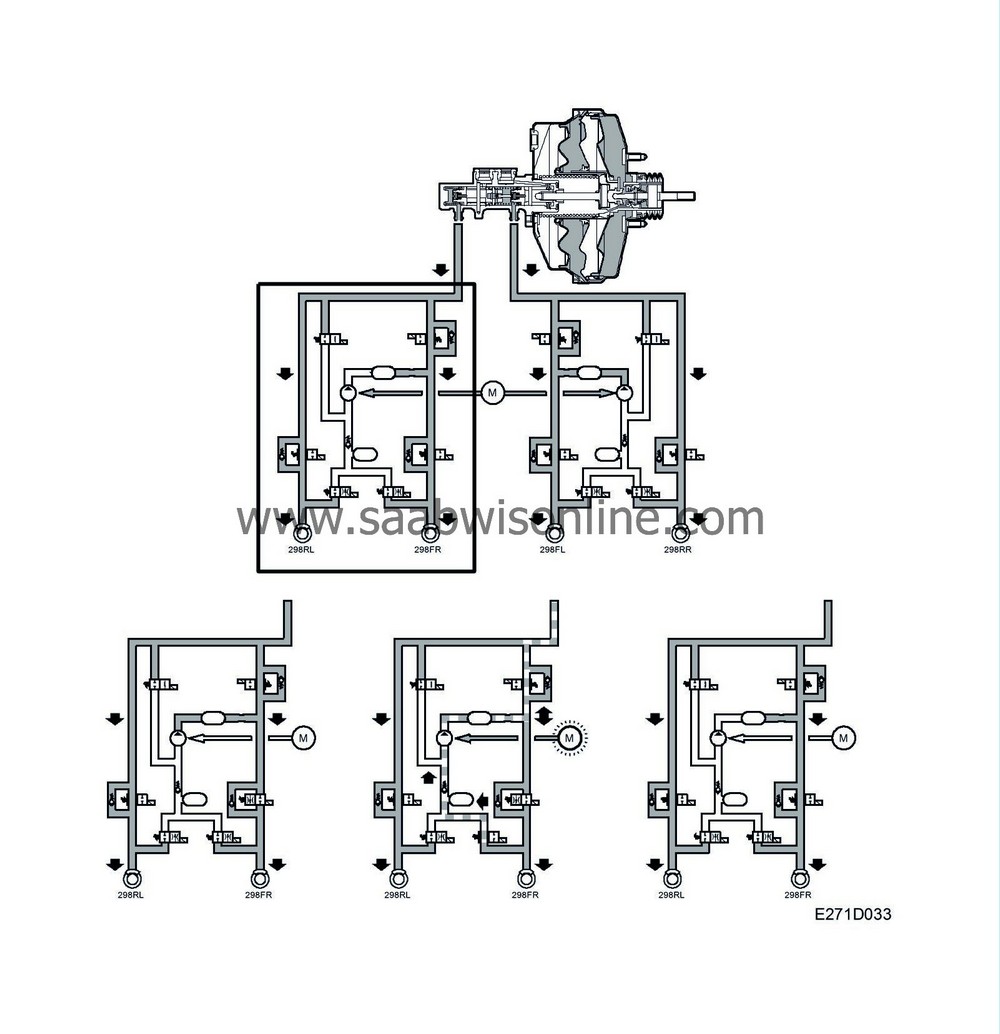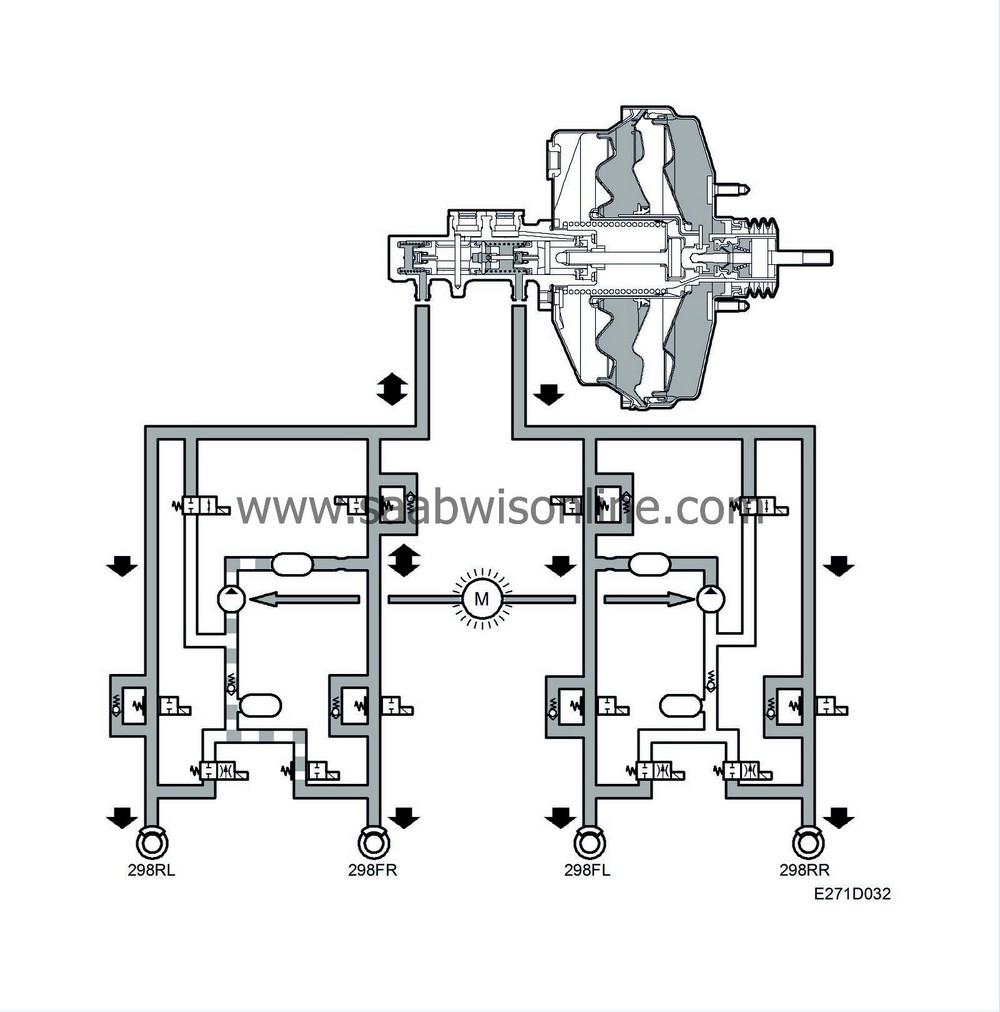PRE-RELEASE
Braking with ABS modulation
| Braking with ABS modulation |
The brake pressure to each brake circuit is governed by the reduction in wheel speed sensed by the wheel sensors. The control module controls the inlet and outlet valves in such a way that the greatest possible brake force is applied between the wheels and the road surface.
Pressure is retained when the inlet valve is closed and reduced when the outlet valve is opened at the same time as the return pump starts.
ABS modulation will continue until:
| • |
The car has been brought to a standstill.
|
|
| • |
The driver has reduced the pressure applied to the brake pedal such that the road surface is able to take up the brake force without any of the wheels tending to lock up.
|
|
The return pump, which returns excess brake fluid to the master cylinder, is activated only when the ABS mode is operative and the outlet valve is open.
The pressure in the flow of additional brake fluid is determined by the brake pressure in the master cylinder, which is in turn proportional to the pedal force applied.




